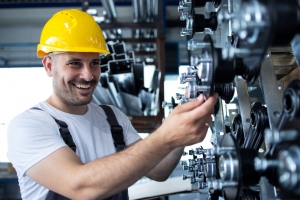please click here:
https://www.dragon-abrasives.com/boron-carbide.html
Introduction to Boron Carbide
Boron Carbide, often referred to as “black diamond,” is one of the hardest known materials after diamond and cubic boron nitride. Its combination of exceptional hardness, lightweight structure, and chemical stability makes it a preferred material in multiple industries, ranging from defense to industrial machining. Unlike metals or simple ceramics, Boron Carbide offers a unique balance between strength and durability while maintaining a relatively low density.
This article explores the physical and chemical properties of Boron Carbide, its manufacturing methods, applications, and a detailed comparison with other similar materials. Whether you're an engineer, a manufacturer, or a materials science enthusiast, this comprehensive guide provides valuable insights into one of the most advanced materials of the modern era.
Understanding the Structure and Properties of Boron Carbide
Boron Carbide (chemical formula B₄C) is a covalently bonded compound known for its high hardness and extraordinary resistance to wear and corrosion. The compound's crystalline structure is rhombohedral, consisting of twelve-atom icosahedra of boron atoms linked by three-atom chains. This unique atomic arrangement gives Boron Carbide its signature combination of hardness and low weight.
Key Properties of Boron Carbide:
-
Hardness: 9.3 on the Mohs scale (just below diamond)
-
Density: Approximately 2.52 g/cm³ (very lightweight)
-
Melting Point: Around 2763°C
-
Thermal Conductivity: High, aiding in heat dissipation
-
Chemical Stability: Resistant to acids, alkalis, and oxidation
-
Fracture Toughness: Lower compared to metals but superior among ceramics
These characteristics make Boron Carbide highly suitable for demanding environments, such as abrasive wear, high temperature, and ballistic protection.
How Boron Carbide is Manufactured
The traditional method of producing Boron Carbide involves reacting boron oxide (B₂O₃) with carbon materials (such as petroleum coke or graphite) at extremely high temperatures in an electric arc furnace. The resulting compound is crushed and refined into powder or sintered blocks.
Modern processing techniques have improved particle uniformity and purity, resulting in advanced-grade Boron Carbide suitable for precision industries. Common fabrication methods include:
-
Hot Pressing: Produces dense, strong plates used in armor.
-
Reaction Sintering: Allows complex shapes with high dimensional accuracy.
-
Chemical Vapor Deposition (CVD): Used for thin protective coatings.
-
Powder Metallurgy: Ideal for custom applications requiring unique geometries.
Boron Carbide vs. Other Hard Materials
To better understand the advantages of Boron Carbide, let's compare it with other hard materials like Silicon Carbide and Tungsten Carbide.
| Property | Boron Carbide (B₄C) | Silicon Carbide (SiC) | Tungsten Carbide (WC) |
|---|---|---|---|
| Hardness (Mohs) | 9.3 | 9.2 | 9.0 |
| Density (g/cm³) | 2.52 | 3.21 | 15.6 |
| Melting Point (°C) | 2763 | 2730 | 2870 |
| Thermal Conductivity | High | Moderate | High |
| Corrosion Resistance | Excellent | Good | Fair |
| Cost | Moderate | Lower | High |
| Applications | Armor, abrasives, nuclear | Semiconductors, abrasives | Cutting tools, drills |
From this comparison, it's clear that Boron Carbide offers an exceptional strength-to-weight ratio and corrosion resistance advantage. While Tungsten Carbide is denser and tougher, Boron Carbide's lightweight nature gives it a distinct edge in industries where mobility and energy efficiency are key.
Applications of Boron Carbide in Different Industries
Defense and Armor Protection
Boron Carbide's extreme hardness and light weight make it ideal for body armor, tank armor, and helicopter protection systems. It can effectively stop bullets and shrapnel without adding excessive bulk. Military-grade armor systems increasingly use Boron Carbide plates to replace heavier materials such as steel or alumina.
Industrial Abrasives and Nozzles
In sandblasting and water jet cutting, Boron Carbide nozzles last significantly longer than tungsten or steel equivalents. Its superior wear resistance minimizes downtime and maintenance, making it a cost-effective choice for long-term operations.
Nuclear Applications
Boron has a high neutron absorption cross-section, making Boron Carbide an essential component in nuclear reactors. It's used in control rods and shielding materials to regulate neutron flux and enhance reactor safety.
Aerospace and Automotive Engineering
Due to its low density and high strength, Boron Carbide is increasingly used in lightweight structural components, especially in high-speed aircraft and performance vehicles. These parts improve fuel efficiency and reduce overall weight without compromising durability.
Electronics and Semiconductor Manufacturing
The excellent hardness and chemical inertness of Boron Carbide make it suitable for semiconductor wafer polishing and surface finishing. Its stability ensures precision in microfabrication and optical component production.
Advantages of Using Boron Carbide
-
High Hardness and Strength – Ideal for cutting, grinding, and ballistic protection.
-
Lightweight Nature – Easier handling and reduced fuel costs in transportation or defense.
-
Chemical and Thermal Resistance – Performs reliably in corrosive and high-temperature environments.
-
Cost Efficiency Over Time – Although the initial cost may be higher, its long service life offsets replacement expenses.
-
Environmental Stability – Does not oxidize easily, extending product lifespan even in extreme conditions.
Limitations of Boron Carbide
While Boron Carbide is highly advantageous, it has certain limitations:
-
Brittleness: It may fracture under extremely high impact stress.
-
Difficult Machining: Due to its hardness, specialized equipment is required for shaping or drilling.
-
Cost of Processing: The production process can be expensive compared to simpler ceramics.
Despite these drawbacks, innovations in composite materials and fabrication technologies continue to expand Boron Carbide's usability.
Innovations and Future Prospects
The growing demand for lightweight, durable materials has spurred significant research into improving Boron Carbide composites. Scientists are experimenting with graphene-infused Boron Carbide and nano-engineered versions to enhance toughness without losing hardness.
Emerging applications include:
-
Next-generation armor systems for drones and autonomous vehicles.
-
High-efficiency nuclear control systems for small modular reactors.
-
Advanced energy storage devices that utilize Boron Carbide's high conductivity.
As industries shift toward sustainability and energy efficiency, Boron Carbide's potential continues to expand beyond traditional roles.
Maintenance and Handling Recommendations
To ensure optimal performance and longevity:
-
Avoid high-impact collisions that may cause micro-fractures.
-
Use specialized diamond tools for cutting or drilling.
-
Store Boron Carbide components in dry, clean environments to prevent contamination.
-
Periodically inspect for wear when used in high-abrasion systems.
Proper maintenance significantly increases the life span and performance reliability of Boron Carbide-based equipment.
Conclusion
Boron Carbide stands as one of the most remarkable materials in modern engineering — a fusion of strength, resilience, and lightness that enables high-performance solutions across numerous industries. From armor protection to semiconductor manufacturing, it remains indispensable in both civilian and defense sectors.
Its combination of superior hardness, chemical resistance, and low density ensures that Boron Carbide will remain at the forefront of material innovation for decades to come.
Frequently Asked Questions
1. What makes Boron Carbide so hard?
Its hardness originates from the strong covalent bonding between boron and carbon atoms in its crystal structure.
2. Can Boron Carbide be used in everyday tools?
While not common for household tools, it's used in industrial-grade cutting, grinding, and protective equipment.
3. Is Boron Carbide heavier than steel?
No, it is much lighter — roughly one-third the density of steel — while offering greater hardness.
4. How is Boron Carbide different from Silicon Carbide?
Boron Carbide is harder, lighter, and more chemically resistant, though Silicon Carbide is less brittle and cheaper.
5. What industries benefit most from Boron Carbide?
Defense, aerospace, nuclear power, and advanced manufacturing sectors benefit most due to its durability and lightweight advantages.
Summary
Boron Carbide is one of the hardest and lightest materials used in defense, aerospace, and industrial manufacturing. With exceptional wear resistance, chemical stability, and heat tolerance, it offers unmatched performance in armor, abrasives, and nuclear applications.






